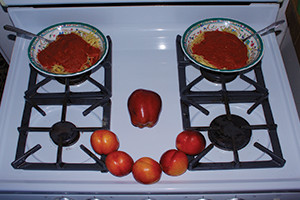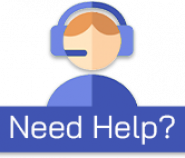You’ve probably worked pretty hard to make sure your home is a safe place for your kids and family. But how safe is it? Find out how to keep your home clean and safe by reading our 10 ways to make your home healthier and safer.
The best part is, these ways to make your home healthier and safer don’t break the bank. They are simple, inexpensive solutions to implement today to ensure your family is safer at home.
- Manage the dust in your house
So your home is a little dusty—no big deal, right? Wrong. Inhaling a lot of dust can cause irritation or disease in the lungs. Our lungs have defense mechanisms that help combat some dust in different areas of the respiratory tract, but we don’t want to inhale it in the first place.
Don’t make your respiratory system work overtime to battle inhaled dust.
Keep your family safe from excessive dust inhalation by:
- Using a vacuum cleaner instead of a broom
- Washing bedding weekly
- Turning the thermostat fan on when you vacuum
- Using damp rags to wipe away dust
- Cleaning carpets and rugs regularly
- Changing your furnace filter regularly
Read more tips on how to clean the air in your home.
- Get your home tested
It’s a good idea to get your home tested for lead and radon, and to check for mold. Likely, testing hasn’t been done since your home sold, which could have been some time ago.
– Radon is estimated to cause around 21,000 lung cancer deaths per year, according to the U.S. Environmental Protection Agency. Testing is inexpensive and easy to do, the EPA says.
– Lead Paint. If you’re concerned that your home has lead paint—which can cause stomach pain, headache, and even poisoning—you can test for it by buying an EPA-recognized test kit at various home stores. Learn more about testing for lead paint here.
– Mold can grow in humid, damp, and warm locations, and can cause eye irritation, wheezing, or nasal stuffiness in some people. The Centers for Disease Control and Prevention does not recommend routine sampling for molds. Instead, prevent mold from growing in your home. And if you do find it, read more from the CDC about how to clean it up.
- Don’t use pesticides
If you’re a gardener, using insect pest control sprays and treatments could be more harmful than the bugs you’re trying to ward off. Look for non-toxic insect repellants, or use beneficial insects, traps, or barriers to stop your bug problem.
It’s also a good idea to ask people to remove their shoes when they come into your home. That way, they don’t track in chemicals from lawn fertilizers and pesticides.
- Be careful with plastic bottles and canned foods
Plastic bottles can contain bisphenol A, or BPA, an industrial chemical used since the 1960s to make certain plastics and resins. If there is BPA plastic in a food container, for example, the BPA can seep into food.
Look for plastics labeled as “BPA-free” and reduce use of canned goods, many of which are lined with resin that contains BPA. Other alternatives include using glass, stainless steel, or porcelain for food consumption and storage.
- Filter your tap water
Is the municipal water that flows out of your tap safe to drink? It might not be. While the government’s Safe Drinking Water Act regulates pollutants and chemicals in our drinking water, sometimes testing reveals drinking water that does not meet public health goals.
The best thing you can do to protect your family from potentially harmful tap water is to filter your water.
- Careful when cooking with Teflon
Cooking your meal using a Teflon-coated pan can make cleanup easier. But it can also pose health risks if the pan gets overheated. When overheated, the Teflon on a pan can break apart and emit gas or particles into the air, which can cause flu-like symptoms.
Instead of risking it, use stainless steel or cast iron pans when cooking for your family.
- Wash your hands
Everyone knows to wash their hands. But are you and your family fastidious about hand washing? Germs on unwashed hands can get into food and drinks, or onto objects like toys, tabletops, and stair railings, causing the spread of germs and sickness.
Washing your hands with soap kills germs more effectively than washing with water alone, according to the CDC, and helps prevent respiratory infections and diarrhea. Teach your kids about hand washing at a young age, and they could stay healthier as a result.
- Use non-toxic cleaning products
Switching to non-toxic cleaning products can not only keep your kids and family safe, but can be better for the environment. Harsh chemicals in some household cleaners can emit harmful fumes that may irritate the throat and nasal passages.
Read your cleaning product labels. Potentially harmful chemicals you want to avoid include phthalates, triclosan, Butoxyethanol, and chlorine. Better yet, remove the guesswork of which cleaners are safe by switching to non-toxic cleaning products and detergents.
Read more on 7 household toxins you should trash immediately.
- Eat organic, eat healthy
You can avoid pesticides by choosing to eat organic produce. Whether you eat organic or not, wash your produce thoroughly before eating it. If you don’t know if a fruit is organic, peel the skin from fruits like apples and peaches.
Learn which fruits and vegetables typically have the highest levels of pesticide residue. Of course, any fruits and vegetables are likely a better choice than processed foods and sugary treats.
- Avoid Nicotine
If you’re a smoker or use tobacco products, vow today to keep you and your family healthier by quitting. The nicotine in tobacco products is addictive, and smoking can cause serious health problems, according to the CDC.
By quitting, you can cut your risk of heart disease within two years, and reduce your risk of lung diseases, including lung cancer, the CDC says. Quitting should be a no-brainer for everyone in your family who uses nicotine.
While quitting will not only help you, it will also help your family avoid Thirdhand Smoke exposure. We’re all aware that smoking and secondhand smoke exposure are harmful, but what about “thirdhand smoke”? This is a fairly new term used to describe the residual contamination from tobacco smoke that lingers in rooms long after smoking stops and remains on our clothes after we leave a smoky place. It may seem simply like an offensive smell, but it is also symbolic of the presence of tobacco toxins.
A study published in February 2010 found that Thirdhand Smoke causes the formation of carcinogens. The nicotine in tobacco smoke reacts with nitrous acid – a common component of indoor air – to form the hazardous carcinogens. Nicotine remains on surfaces for days and weeks, so the carcinogens continue to be created over time, which are then inhaled, absorbed or ingested and cause serious health issues, especially for children of smokers who more vulnerable to Thirdhand Smoke. So, if you must smoke, choose to smoke outside and be sure to immediately wash any clothing, blankets, or other articles that have come in contact with cigarette smoke to avoid exposing your family to the dangers of Thirdhand Smoke.
Now it’s time to check your home for these ways to make your home healthier and safer.


